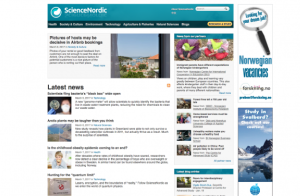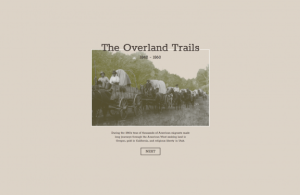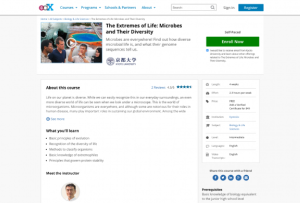General Interest
Back to Top
|
 |
|
The Quack Doctor
|
Science |
|
In the 1880s, long before one could purchase a treadmill, a New York company promoted a "health jolting chair" for "ALL PERSONS...whose sedentary habits have caused or may cause disease." Meanwhile, in 1896, a Fort Wayne, Indiana pharmacy placed an advertisement in the local newspaper for "ambition pills for weak and nervous men." Caroline Rance, a writer who holds a master's degree in the history of science, is the author of The Quack Doctor, a blog dedicated to nineteenth and early-twentieth century medical advertisements. Readers can explore these advertisements by categories including Digestive Issues, General Health & Panaceas, Rheumatism, and Women's Complaints. These advertisements are accompanied by Rance's thoughtful commentary, which places these advertisements in historical context (and, on occasion, calls attention to false "Victorian advertisements" that have been created by contemporary humorists). Rance clarifies that while her blog may be called The Quack Doctor, she includes all medical advertisements, from hucksters and from legitimate health professionals alike. And while some of these products and remedies have been debunked by more recent research, others make good medical sense. Not always for the squeamish, The Quack Doctor provides visitors with a fascinating glimpse into the evolution of medicine and healthcare. [MMB] |
|





|
|
 |
|
Recording and Playing Machines
|
Arts |
|
Since Thomas Edison invented the phonograph in 1877, innovators have continued to develop new technologies for recording and playing sound. In this Europeana exhibition, visitors can learn more about "machines that illustrate a wide range of techniques and technologies" for doing so. This diverse collection includes contributions from nine different institutions across Europe, including the British Library and the Netherlands Institute for Sound and Vision. Visitors can explore these items via five themes: Wax Cylinder & Discs, Shellac & Vinyl Discs, Magnetic & Digital Medium, Radio Set & Receivers, and Player Piano. Within each theme, visitors can examine photographs of instruments both familiar and obscure, accompanied by information about the instrumen's history, design, and utility. For example, visitors can check out a 1959 EMI Dictating Machine, a 1925 Player Piano (accompanied by an audio recording), and a 1927 Edison Bell gramophone designed for children. [MMB] |
|





|
|
 |
|
ScienceNordic
|
Science |
|
The team behind ScienceNordic describes this online publication as "the trusted English-language source for science from Nordic countries." ScienceNordic is authored by Forskning.no and Videnskab.dk, science news organizations based out of Norway and Denmark, respectively. Visitors can browse this blog by a number of categories, including Health, Society and Cultures (where visitors will find stories addressing the intersections of science and society), and Technology, Within these categories, readers will find articles about recent research studies, health care innovations, technological developments, environmental news, and more. New articles are added almost daily. ScienceNordic will appeal to researchers and journalists who seek to stay informed about science developments around the globe, as well as anyone with an interest in science, health, and environmental news. [MMB] |
|





|
|
 |
|
TypeWolf
|
Educational Technology |
|
Typography enthusiasts, including professional graphic designers and those of us with a general fondness for font design, will enjoy TypeWolf, a website about "what's trending in type." Authored by professional designer Jeremiah Shoaf (whose clients include the Discovery Channel, Animal Planet, and The Washington Post to name just a few), TypeWolf features a number of interesting resources and articles. Anyone currently engaged in design projects, such as creating a website, flyer, or infographic, may want to start by checking out Font Recommendations & Lists. Here, visitors can explore Shoaf's top ten fonts that are underused, check out possible alternatives for the ubiquitous Helvetica, and learn where to find free fonts. Meanwhile, Web Fonts in the Wild features a new website (and font) each day, allowing designers to visualize how fonts shape the aesthetic character of different websites. Those interested in reading Shoaf's musings about new developments in the world of typography can do so via his Blog. Finally, the Guides & Resources section offers links to a variety of outside resources including online books, blogs, and more. [MMB] |
|





|
|
 |
|
 |
|
Literary Hub
|
Language Arts |
|
Literary Hub is an online magazine that strives to be "a single, trusted, daily source for all the news, ideas and richness of contemporary literary life." To do so, Literary Hub partners with a wide variety of sources for literary news and reviews, including publishers, bookstores, and literary journals. Readers will find book reviews, author profiles, interviews, essays, book excerpts, and more. Those looking for a new read may want to start with Bookmarks, a feature that helpfully compiles critical reviews of new books from major publications. Readers can then see how these reviewers assessed the book (reviews are categorized as Rave, Positive, Mixed or Pan) and read these reviews in full. Meanwhile, readers can explore a number of original pieces in Features. As of this write up, recent pieces in Features include an essay by novelist and short story writer Jhumpa Lahiri and a profile of author Jami Attenberg. Those who want to stay informed about literary news may want to sign up for Lit Hub Daily, a regular round-up of literary news from Literary Hub and other publications and organizations. [MMB] |
|





|
|
 |
|
The Travel Letters of Mrs. Kindersley
|
Social studies |
|
Jemima Kindersley (nee Wicksteed) was born in Norwich, England in 1741. In 1764, after her marriage to Nathaniel Kindersley, the young couple embarked on a series of global travels. Destinations included Salvador, Brazil, the Cape of Good Hope (in modern-day South Africa) and Calcutta, India. In 1777, almost a decade after her return to England, Kindersley published Letters from the Island of Teneriffe, Brazil, the Cape of Good Hope, and the East Indies. The book was one of the first travelogues to be penned by a woman. On this website, visitors can browse over 60 transcribed letters penned by Kindersley during her travels. These letters are tagged by a number of terms to aid in browsing, and are perhaps best explored via interactive map, where letters have been arranged by geographic location. Visitors can also browse especially memorable quotes by topic in the Find Quotes By Map section. [MMB] |
|





|
|
 |
|
Poetry and Prayer: Islamic Manuscripts from the Walters Art Museum
|
Arts |
|
First open to the public in 1909 in Baltimore, the Walters Museum began as the collection of William Thompson Walters and his son, Henry. Bequeathed to the city of Baltimore in 1931, the collection has grown to include 35,000 artifacts from "ancient Egyptian mummy masks and medieval armor to 19th-century French impressionism and turn-of-the-century art deco." The Walters collection also includes significant Islamic manuscripts. In 2008, the museum received an NEH grant to catalog and digitize 236 of these illuminated manuscripts dating from the 9th to the 19th centuries containing 53,000 folios (2-page spreads). This exhibition is based on the NEH grant work, and permits visitors to view the manuscripts in an online, page-turner format. For example, W.658 is Kitab-i Bahriye (Book of the Sea), with a Map of the Bay of Salonica, and includes 240 maps and charts, while W.568 is a manuscript fragment of the Qur'an from the 12th century, written on Italian paper in a large Maghribi script. [DS] |
|





|
|
























